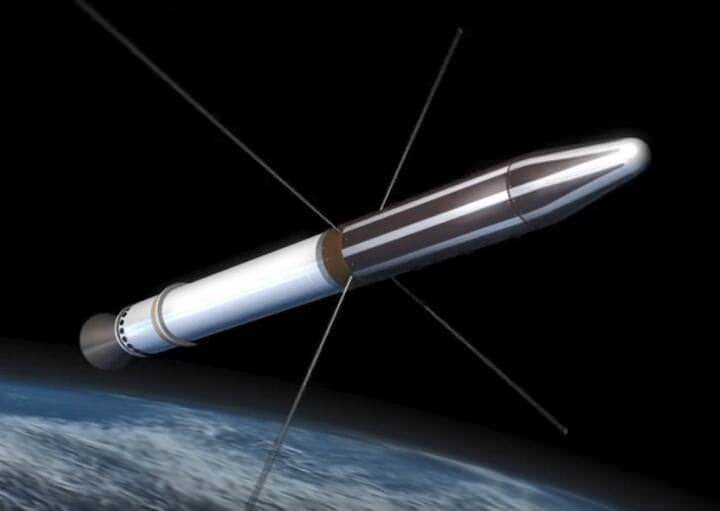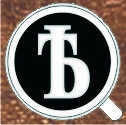
There is a special event
On October 4, 1957, the first ever man-made satellite was sent into orbit around the Earth, marking the beginning of the space age in human history
"The initial groundbreaking achievement for humanity is to transcend the atmosphere and become a satellite of our planet. Everything else becomes relatively easier, even the journey beyond our solar system."
Konstantin Eduardovich TSIOLKOVSKY
A new era in space exploration
October 4, 1957 marked a historic moment in human history with the launch of the world’s first artificial satellite into Earth’s orbit, heralding the beginning of the space age.
This revolutionary satellite, the first man-made celestial body, was successfully placed in orbit by the powerful R-7 launch vehicle. The momentous launch took place at the 5th Scientific Research Test Site of the USSR Ministry of Defense, later known as the Baikonur Cosmodrome.
The PS-1 spacecraft, also known as the simplest satellite-1, had a spherical shape with a diameter of 58 centimeters. It had a weight of 83.6 kilograms and was equipped with four pin antennas, each measuring 2.4 and 2.9 meters in length. These antennas were used to transmit signals from the spacecraft’s battery-powered transmitters.
Approximately 295 seconds after liftoff, the PS-1 spacecraft, along with the 7.5-ton central unit of the rocket, was successfully placed into an elliptical orbit. This orbit had an apogee (highest point) of 947 kilometers and a perigee (lowest point) of 288 kilometers.
At 315 seconds after liftoff, the PS-1 satellite separated from the second stage of the launch vehicle. As soon as this separation occurred, the satellite’s call signs were immediately heard all around the world.
The PS-1 satellite completed 1440 orbits around the Earth, covering a distance of approximately 60 million kilometers, during its 92-day mission that ended on January 4, 1958. Furthermore, its radio transmitters remained operational for a span of two weeks following the launch.
The launch of an artificial satellite into orbit around the Earth held immense significance in expanding our understanding of outer space and enabling the study of our planet within the solar system. The analysis of the signals received from the satellite provided scientists with invaluable insights into the upper layers of the ionosphere, previously unattainable. Additionally, this mission yielded crucial data on the equipment’s performance and verified all calculations, while also allowing for the determination of the density of the upper atmosphere through the satellite’s deceleration.
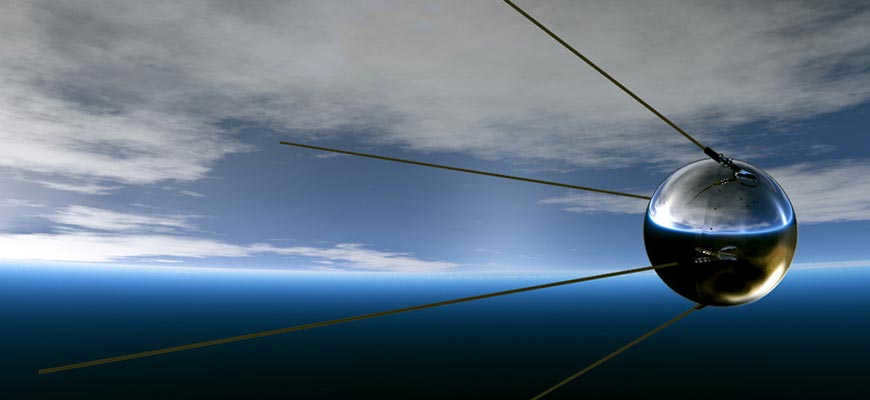
The first man-made satellite’s launch caused a significant global impact. The entire globe became aware of its journey. The event was widely covered by the international media. In September 1967, the International Federation of Astronautics declared October 4th as the official Day marking the commencement of the space era for humanity.
“Truth” about the satellite
“On October 4, 1957, the USSR achieved a successful launch of the initial satellite. As per initial information, the launch vehicle provided the satellite with the required orbital velocity of approximately 8,000 meters per second. At present, the satellite is moving along elliptical paths around the Earth, and its journey can be witnessed using basic optical devices such as binoculars and telescopes, especially during sunrise and sunset.”
Based on ongoing observations, the current calculations indicate that the satellite will traverse altitudes of up to 900 kilometers above the Earth’s surface. The time it takes for the satellite to complete one full revolution will be 1 hour and 35 minutes, and the orbit’s inclination angle to the equatorial plane is 65 degrees. On October 5, 1957, the satellite will pass over the Moscow region twice – first at 1:46 am and then again at 6:42 am Moscow time. Regular updates regarding the subsequent movements of the first artificial satellite launched by the USSR on October 4 will be broadcasted through radio stations.
Sputnik as a cautionary tale
Not many individuals in the United States are familiar with an individual named Sergei Pavlovich Korolev. However, it was because of him that the National Aeronautics and Space Administration (NASA) came into existence; it was because of him that we were able to successfully reach the moon. It was thanks to this enigmatic Russian that our nation implemented federal higher education loans; it was because of him that we have the ability to enjoy National Football League games through DirecTV.
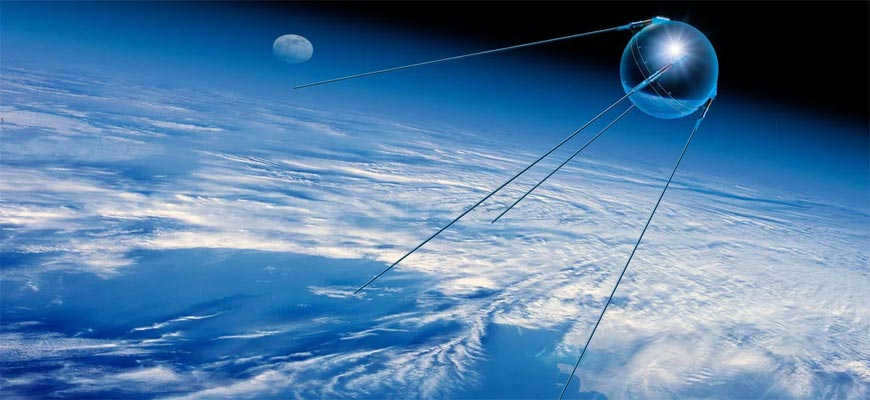
“Mastermind” – these were the words that became the moniker of Korolev, whose true identity was classified by the Soviet Union – almost single-handedly initiated the global race for rockets and space. It was primarily due to this determined individual, who survived Stalin’s Gulag, despite losing all his teeth and nearly his life in the Siberian labor camps, that the Democratic Party lost the 1960 White House election, while Lyndon B. Johnson, conversely, went on to secure the presidency. Johnson, in turn, served alongside John F. Kennedy and eventually ascended to become the thirty-sixth president of the United States.
These events were all just minor repercussions compared to the monumental impact of the launch of the minuscule Soviet Sputnik, which was developed under the guidance of Korolev fifty years ago and sent into space on October 4, 1957. This launch sparked a state of panic in the United States, the effects of which continue to be felt today. However, the primary source of fear was not the aluminum sphere itself, but rather the colossal carrier that propelled it into space – the world’s first intercontinental ballistic missile. This massive weapon, weighing 183 tons, granted the former Soviet Union the capability to obliterate any city on the planet within a matter of minutes, a capability that no other nation possessed at the time. For the first time in American history, its territory was exposed and vulnerable to attack by a foreign power.
Los Angeles Times
Photo: www.yankodesign.com, Yandex
The content was created using publicly available sources
On October 4, 1957, a Ukrainian engineer named Sergei Korolev successfully launched a rocket that placed the first man-made satellite into orbit around the Earth. Over the past 65 years, numerous publications and articles have been written about this groundbreaking achievement and the process behind it. We have compiled a list of the top 5 most intriguing facts regarding this historic event. This information is being presented in honor of International Space Week.
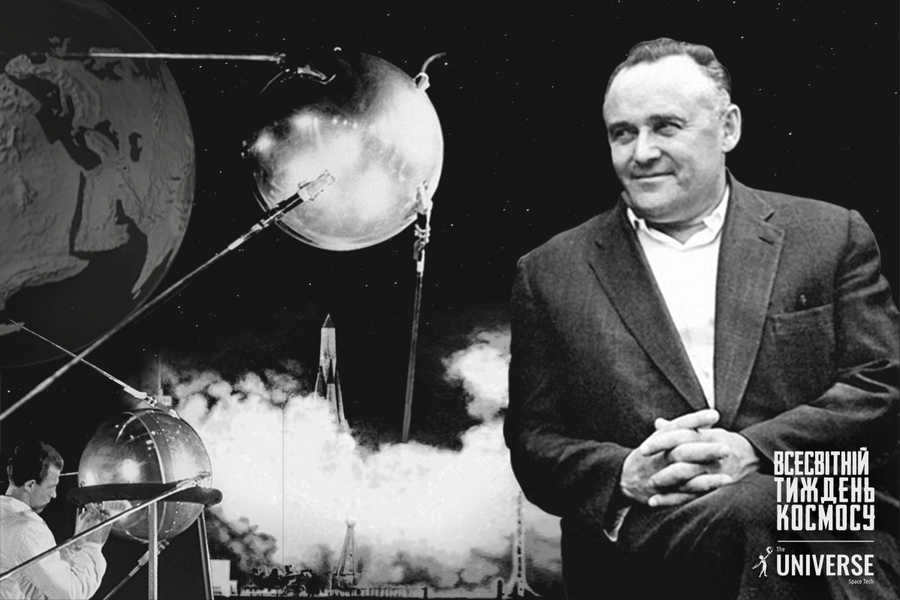
Ukrainian aerospace engineer Sergey Korolev
Sergey Korolev was born in Zhitomir and developed a fascination with the heavens at a young age. He initially attended the Kiev Polytechnic Institute, where he focused on the design of aircraft and gliders, but later relocated to Moscow to pursue his experiments with rocket engines.
Korolev was not a politician, but in the oppressive Soviet Union, political involvement was not a prerequisite for imprisonment. Despite this, he managed to escape and was subsequently coerced into constructing ballistic missiles for the military.
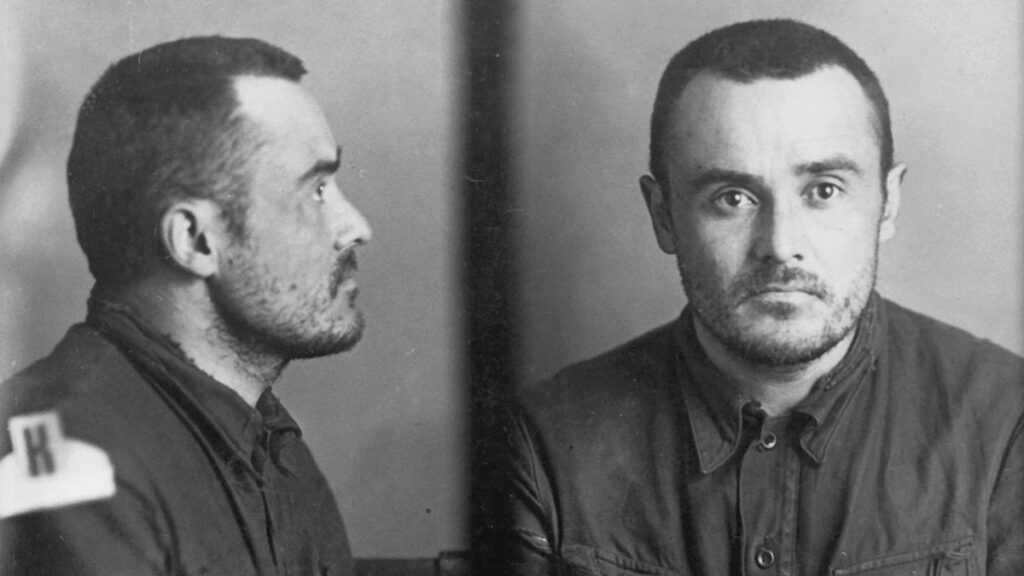
1- It wasn’t named Sputnik
The story of a Ukrainian engineer who created something called “Sputnik” may seem strange now, but the truth is that the device, which was created in late 1957, had a different name – “PS-1”. However, due to secrecy, it remained unknown to the public for a long time.
In the Soviet press, it was referred to as “Sputnik-1”. In the United States and other English-speaking countries, it is mostly known as Sputnik. In the 1990s and 2000s, the word Sputnik also became widely used in the post-Soviet space.
However, these are simply traditions that have been derived from the names used by media outlets that didn’t have accurate information. There is nothing stopping us from changing these traditions and referring to the first man-made spacecraft as “Suputnik”, highlighting the fact that its main developer was Ukrainian.
2. The sole capability it possessed was signal transmission
The inaugural man-made Earth satellite had a mass of 83.6 kg. Presently, devices of a comparable mass function as repeaters or gather data on our planet’s parameters. Nevertheless, the initial synthetic object in orbit was constructed using vacuum tubes. As a result, its entire internal space was allocated to a transmitter, power source, and control relay.
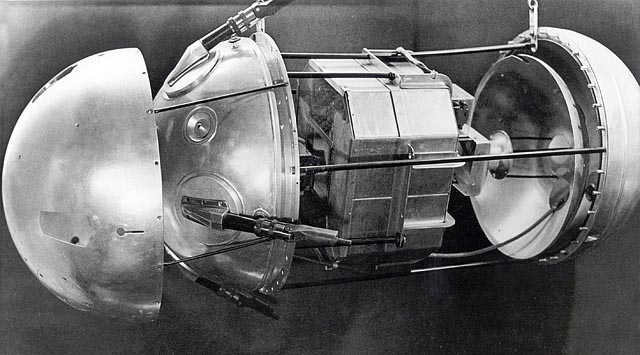
The inaugural satellite had a singular function – to emit a distinctive “beep-beep” sound that resonated with radio enthusiasts worldwide. This simple signal lacked any informational content, yet it proved sufficient to propel the United States into the competitive space race, culminating 12 years later with the historic moon landing.
Following the launch, Korolev could only monitor the satellite’s signal without the capability to issue any commands. The absence of a basic receiver aboard the satellite rendered it incapable of carrying out orbit corrections or capturing photographs of the Earth’s surface. Neither a camera nor engines were equipped on this pioneering device.
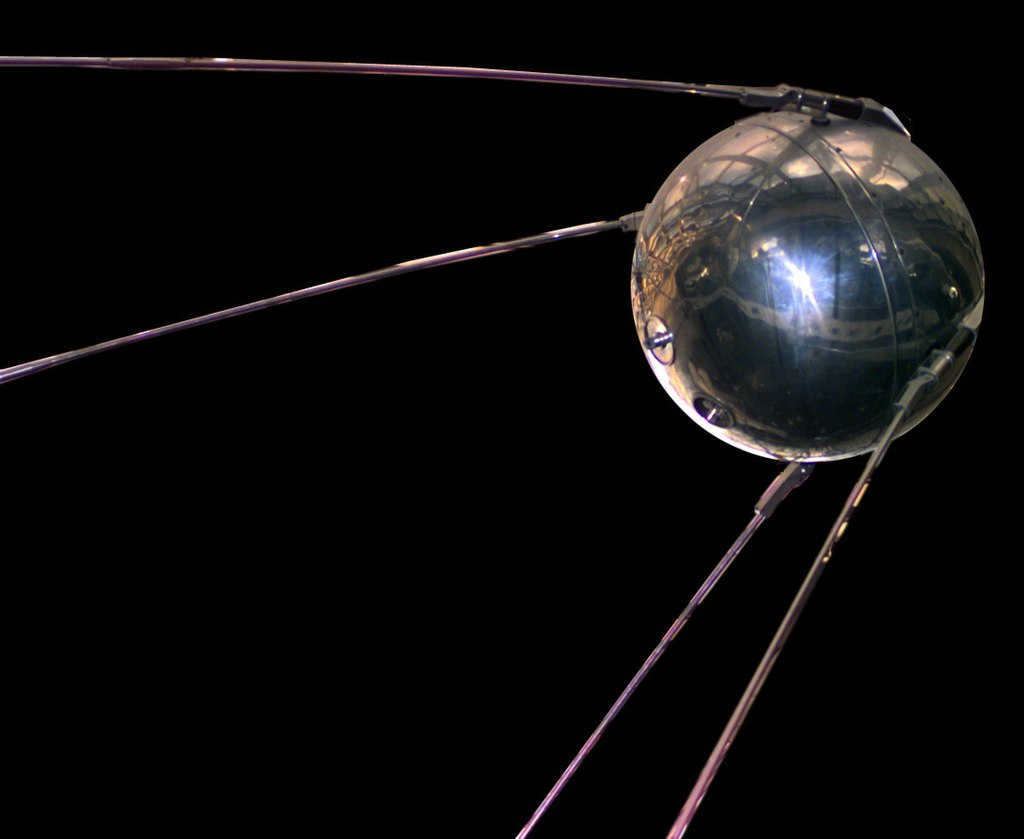
The first satellite was equipped with a combination of HF and VHF antennas that were cleverly integrated into the hull, creating the illusion of a single piece. This innovative design resulted in the formation of a pair of antennas that resembled horns. Similarly, a second pair of antennas was also arranged in a similar manner. The engineers opted for this unconventional approach due to the absence of any propulsion system on the “Sputnik”, which made it impossible to position the antenna towards Earth. Hence, they devised this unique design to ensure that the satellite emitted radio signals uniformly in all directions.
4. The launch of the satellite “Sputnik” was seen as a divine sign
There is an interesting coincidence associated with the launch of the satellite. At the time when the Soviet Union was sending it into space, a popular singer, who was one of the pioneers of the rock and roll genre and known as Little Richard, was on a concert tour in Australia.
Little Richard was known for his energetic performances. However, in October 1957, while performing at the Sydney Stadium, he witnessed an unusually bright meteor. It is believed to have been the debris from the rocket that launched the first satellite into orbit around the Earth. Whether this was true or not remains a mystery, but it left a lasting impression on Richard.

The vocalist made the determination that it was a divine indication of his misguided lifestyle. He increasingly immersed himself in spirituality and for the subsequent five years, instead of pursuing a career in music, he dedicated himself to preaching.
Following that, Little Richard made a few more returns to music, or transformed into a clergyman. He passed away in 2020 at the age of 88, seemingly remaining convinced until his final moments that the launch of the Sputnik satellite was a divine sign to turn to God.
5. Naming a plain on Pluto after Sputnik
In 2015, when humanity was finally able to see detailed images of Pluto’s surface, it was discovered that there was a prominent heart-shaped feature on the planet. This region was subsequently named the “Tombaugh region,” with one part of it being designated as the Sputnik Plain.
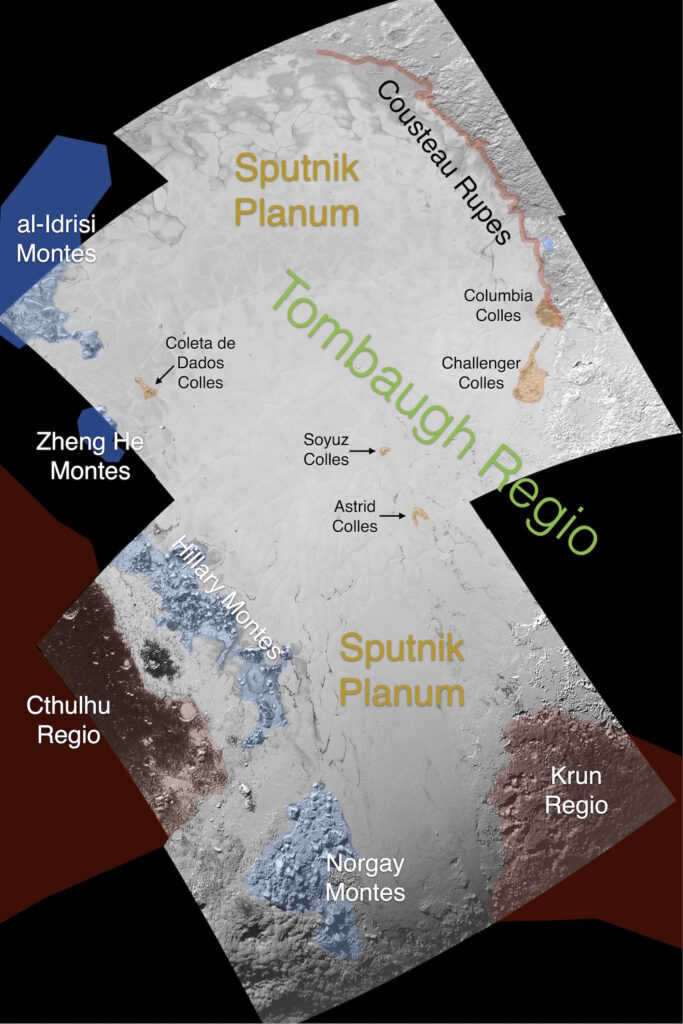
The Sputnik Plain is characterized by its rounded shape and spans approximately 800×1000 km in size. Its total area is roughly equivalent to one-third of Ukraine. Towards the northeast, the plain culminates with an enormous cliff known as the Cousteau escarpment, while it is encompassed by mountains on the remaining sides.
This geographical feature boasts an exceptionally flat surface, with minimal evidence of impact craters. This suggests that it is a relatively recent colossal impact crater, with its base concealed beneath a layer of methane ice.
Receive the latest captivating news and intriguing facts via our Telegram channel!

I have been working as a news editor and feature writer for the past decade, focusing on popularizing science in Ukraine. With a background in civil engineering and a degree as a Candidate of Technical Sciences, I have previously taught aspiring engineers. However, my passion for science has led me to delve into various scientific fields and share my knowledge with the general public. Out of all the subjects, space has always held a special place in my heart. Throughout my career, I strive to show respect for the scientists behind groundbreaking discoveries and the engineers who have developed space technology.
Commemorating the 65th anniversary of the first ever artificial Earth satellite launch
Exactly 65 years ago, on October 4, 1957, humanity witnessed a groundbreaking event – the launch of the first-ever man-made object, an artificial Earth satellite, into the orbit of our planet. Despite its modest weight of only 83 kg and a diameter slightly exceeding half a meter, the historical significance of this momentous achievement cannot be quantified in terms of kilograms or meters. It marked the beginning of the space age, forever altering the course of human history!
The journey leading up to this incredible milestone in domestic science and technology was arduous and complex.
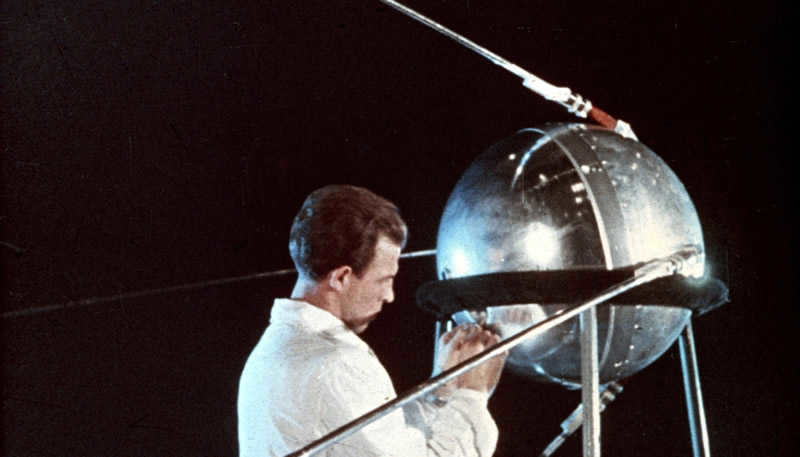
The “PS Object” was the first man-made satellite to orbit the Earth.
Following World War II, the emergence of atomic weapons in the United States and later in the Soviet Union necessitated reliable and impervious delivery systems, with rockets being the most obvious choice. Initially emulating German designs and subsequently developing their own, both superpowers focused on advancing missile technology.
By the mid-1950s, the United States and the Soviet Union had made significant progress in creating a new breed of weaponry – intercontinental ballistic missiles capable of penetrating the Earth’s atmosphere and striking targets thousands of kilometers away.
On June 26, 1954, Defense Industry Minister Dmitry Ustinov received a report note titled “On Creating an Artificial Earth Satellite” from Chief Designer Sergei Pavlovich Korolev. The note included an appendix that discussed the progress made by other countries in the field of artificial satellites (ISR). According to the note, there were current technical capabilities to achieve the necessary speed for launching an artificial Earth satellite using rockets. The most practical and achievable option, in the shortest amount of time, was to develop an automatic device equipped with scientific instruments, capable of radio communication with Earth, and orbiting the Earth at a distance ranging from 170 to 1100 km from its surface.
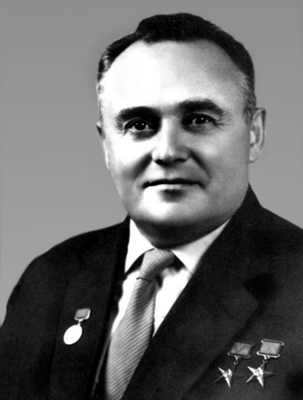
Sergei Pavlovich Korolev was the mastermind behind the R-7 rocket and the inaugural satellite to orbit the Earth.
In January 1956, the Soviet Union Council of Ministers passed a resolution regarding the development of “Object D,” a satellite with an estimated weight of 1000-1400 kilograms, out of which 200-300 kilograms could be dedicated to scientific instruments. The tentative launch date for the first-ever satellite was set for 1957, coinciding with the International Geophysical Year.
The initial design for the first satellite was completed by June. The scientific objectives that the first satellite could achieve were determined. The goals included measuring the density and ion composition of the atmosphere, studying the Sun’s particle radiation, examining magnetic fields, investigating cosmic rays, and more. Additionally, the plan was to gather crucial practical data on the satellite’s thermal conditions, its deceleration in the upper atmosphere, the duration of its orbital path, the peculiarities of its motion in relation to the center of mass, the accuracy of determining its coordinates and orbit parameters, and the use of solar batteries for onboard equipment power supply.
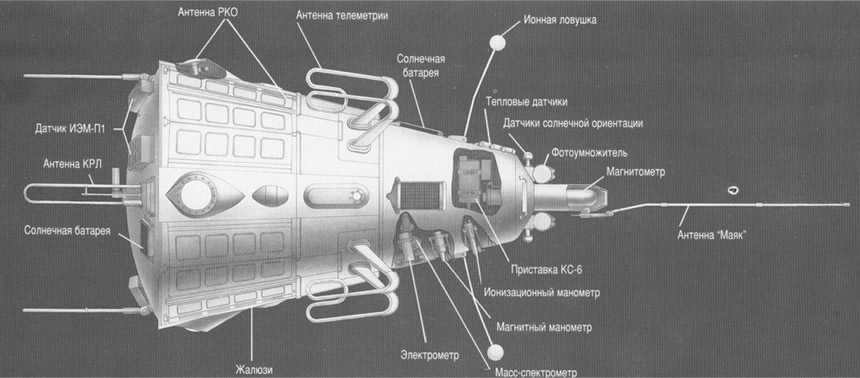
The design of the initial “Object D” was based on specific objectives. To withstand the extreme temperatures of space and the Sun’s intense heat, the satellite was equipped with thermal control system radiators that could be opened or closed. Additionally, solar panels were installed on the sides, top, and bottom of the satellite to provide power. The satellite also featured an automatic electronic program-time device (APTD) for control and a radio system to transmit data on its systems.
In order to support the initial space launch, a command and measurement complex (CIC) was concurrently being developed. The Ministry of Defense was directed to outfit seven ground measurement points (GMPs) along the trajectory of the launch.
The most basic satellite
The work was being carried out hastily, with development occurring simultaneously with testing. The future R-7 launch vehicle was still in the process of being developed, and the launch site for it was just being constructed at Baikonur. Numerous challenges arose with the scientific equipment for the first satellite. By the end of 1956, it became evident that Object D would not be ready by the planned date.
Despite being considered the most basic, the satellite was a groundbreaking creation, with no technological analogues at the time. The only requirement was that it had to be under a certain weight limit (no more than 100 kg). The designers quickly realized that it would be advantageous to make the satellite in the shape of a sphere. This spherical design allowed them to maximize the inner volume while minimizing the surface area of the shell.
The famous “PS object” that we all know from photographs and newsreels was essentially a spherical container with a diameter of 580 mm and a weight of 83.6 kg, complete with four antennas.
Inside the satellite, it was determined that two radio transmitters with emission frequencies of 20.005 and 40.002 MHz should be placed. By receiving their signals, scientists would be able to investigate the conditions through which radio waves travel from space to Earth. Additionally, it was necessary to transmit information about the pressure and temperature inside the satellite. Due to the limitations of technology at that time, strict weight restrictions on the equipment, and tight deadlines, it was not possible to equip the simplest satellite with a complete telemetry system. A solution was found by utilizing the signals from the main transmitter. Specialists could deduce changes in temperature and pressure through variations in signal frequency and duration ratios.
The design process proceeded at a rapid pace, with part manufacturing occurring concurrently with the release of drawings.
The development of the “satellite” version of the R-7 rocket demanded considerable attention and effort. The primary task was to ensure the proper placement of the satellite in the payload bay. To accomplish this, a transition compartment and head fairing were necessary to be constructed. A specialized system for separating the rocket body and the satellite was also designed. Testing this system under ground conditions proved to be extremely challenging. Nevertheless, special equipment and devices were devised to simulate future conditions to some extent. The satellite’s duplicate was repeatedly connected and disconnected from the rocket body until it was confirmed that the entire process functioned reliably: the pneumatic locks operated smoothly, the head fairing separated as intended, the antenna pins were released from their secured position, and the pusher propelled the satellite forward.
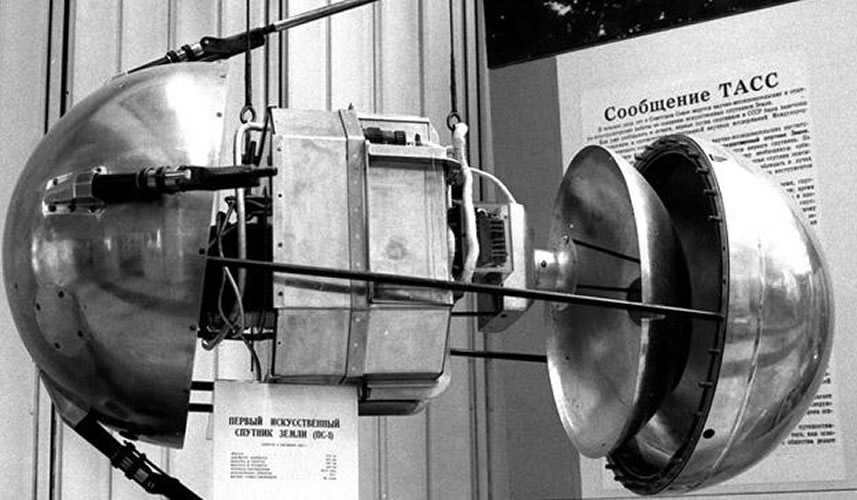
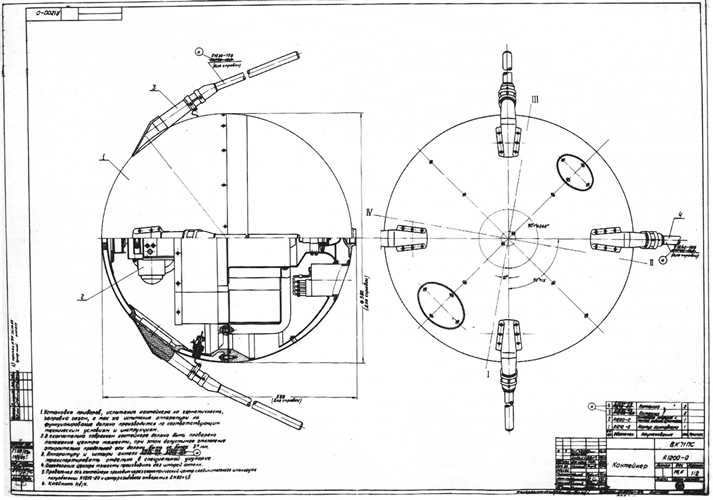
The satellite was designed with simplicity and reliability in mind, while still allowing for a wide range of scientific research to be conducted. Its spherical shape enabled precise measurements of atmospheric density at extremely high altitudes, where previous scientific observations had not yet been possible. The satellite’s body was constructed using an aluminum alloy, with its surface carefully polished to enhance sunlight reflection and maintain the required thermal conditions.
The satellite transmitted telegraphic parcels that lasted about 0.3 s each. The transmitters took turns, with one pausing while the other was active. It was estimated that the satellite could operate continuously for at least 14 days.
Four rod-shaped antennas, each up to 2.9 m long, were placed on the outer surface of the satellite. Once in orbit, the antennas assumed their operational position.
During the flight, the satellite was unoriented and rotated freely. This four-antenna system ensured that the radio signals received were evenly distributed in all directions, minimizing the impact of the satellite’s rotation on signal intensity.
The satellite’s onboard equipment was powered by silver-zinc batteries, which provided electrochemical current. These batteries were designed to last for a minimum of 2 to 3 weeks.
The satellite’s interior was filled with nitrogen. The temperature inside was regulated between 20-30° C using forced ventilation, which was controlled by temperature sensors.
The pioneers – always remembered!
In the months of May, June, and July in 1957, the initial test launches of the R-7 intercontinental rocket, intended to place the inaugural satellite into orbit, occurred. Although the rocket achieved successful launches, there were subsequent incidents of rocket destruction and explosions. It wasn’t until the end of August and early September 1957 that the R-7 rocket finally achieved its first fully successful flights.
On September 17, 1957, during a significant gathering commemorating the 100th birthday of K. Tsiolkovsky, Sergei Korolev, who was then a relatively obscure corresponding member of the USSR Academy of Sciences, delivered a speech. He boldly proclaimed that our nation would soon be capable of launching an artificial satellite into space. Remarkably, just five days later, a launch vehicle arrived at the designated testing location.
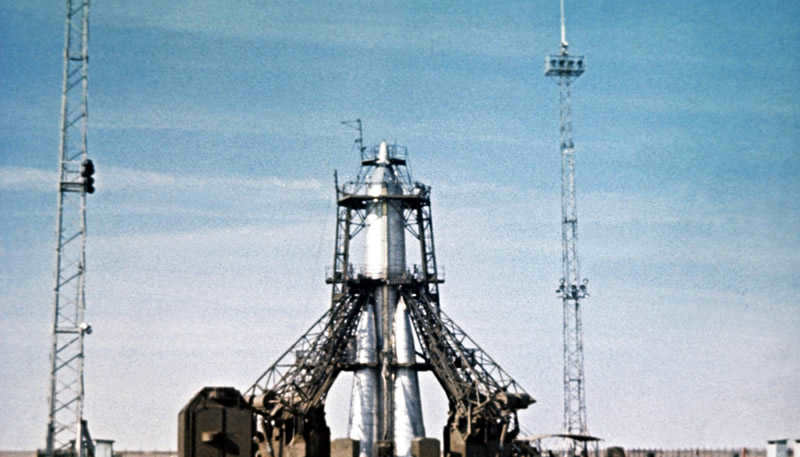
The R7 launch vehicle was positioned on the launch pad at the Tyuratam polygon, which would later become the famous Baikonur.
As the sun began to rise on October 3, 1957, the satellite-carrying rocket was carefully transported from the assembly and test building. Accompanying it were the creators of the world’s first space complex. Once in the launch position, a powerful crane lifted the rocket into a vertical position. Fuel was then pumped from railroad tanks into the rocket’s own tanks.
With the fuel loaded, the rocket’s weight reached 267 tons. The immense rocket appeared stunningly beautiful before its launch, its surface glistening and covered in frost.
The initial velocity required to achieve orbit around the Earth, as calculated by Sir Isaac Newton, has now been successfully achieved for the first time by the ingenuity and skill of the human mind and hands.
Following the separation of the satellite from the final stage of the rocket, the transmitters came online and the iconic signals “Beep. beep. beep. beep” were broadcasted into the atmosphere. These signals were not only heard by experts, but also by amateur radio enthusiasts from nearly every country.
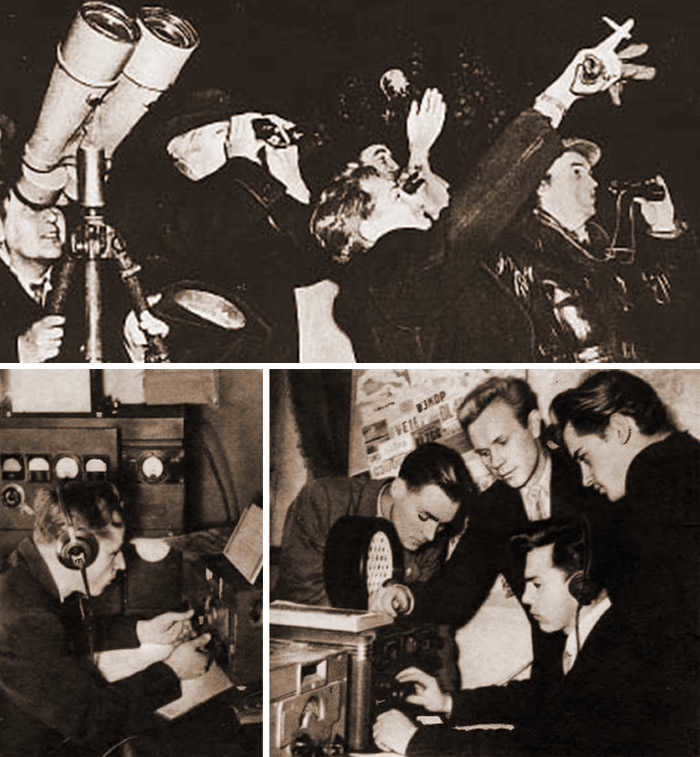
Radio enthusiasts around the globe were able to intercept the signals of Sputnik-1 shortly after its launch, and the third stage of the R-7 rocket, which was in orbit with the satellite, was even visible to the naked eye.
Almost immediately, during the first orbit of the spacecraft, a TASS message was broadcasted: "By the efforts of dedicated research institutes and design bureaus, the world has witnessed the creation of the first man-made satellite to orbit the Earth. It seems that our generation is destined to witness how the liberated and conscious labor of the people in the new socialist society turns the boldest dreams of humanity into reality".
Ray Bradbury had a unique perspective on this occurrence: “The appearance of that celestial light bestowed immortality upon humanity. It was inevitable that Earth, our sanctuary, would eventually become uninhabitable due to extreme temperatures. Immortality was our ultimate destiny, and that radiant light above me served as the initial indication of this transcendence. I expressed gratitude towards the Russians for their audacity…”.
The term “satellite” quickly became a part of the vocabulary in every country around the world. The front pages of international newspapers during those momentous days in October 1957 were filled with awe and admiration for the achievement of our nation. Headlines such as “The most remarkable event of the century”, “The fulfillment of a long-held human desire”, “The Soviets have provided a glimpse into the vastness of the Universe”, “This monumental victory marks a turning point in the course of human civilization”, and “October 4, 1957 will forever be etched in the annals of history” were just a few examples of the global media’s reaction at the time.
The Significance and Purpose of the First Satellite Launch
On October 4, 1957, a historic event took place as the first artificial satellite, known as Prostraniy Sputnik-1, was successfully launched into orbit around the Earth. This groundbreaking achievement was carried out by the USSR Ministry of Defense at the Tyura-Tam test site, now known as Baikonur Cosmodrome. The launch of PS-1 aimed to accomplish various objectives:
- Testing the technical capabilities of the launch vehicle and validating the calculations required for a successful satellite launch.
- Conducting studies on the ionosphere by analyzing the interaction between radio waves emitted by the satellite and their journey through Earth’s atmosphere to the surface.
- Evaluating the density of the upper atmosphere through observations of the satellite’s deceleration.
- The examination of the impact of outer space on hardware, as well as the identification of optimal conditions for hardware functioning in space.
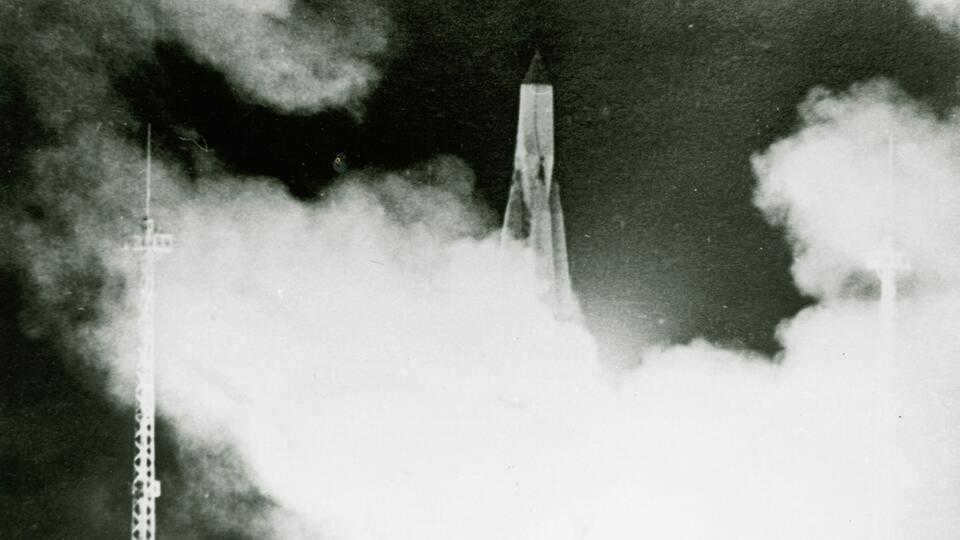

Although the initial satellite did not possess any scientific apparatus, its launch yielded not only vital technical information required for the further advancement of onboard equipment, satellite communication systems, and control complexes, but also valuable scientific data. Specifically, the data gathered from observations of the first satellite’s movement and the parameters of its radio signals proved to be beneficial.
The debut flight of the Earth’s first satellite marked the commencement of the space era and ignited the space competition between the Soviet Union and the United States.
Origins of the initial Earth satellite
The inception of the inaugural Earth satellite was spearheaded by Mikhail Tikhonravov, with the construction of the launch apparatus and subsequent deployment of the satellite into space being overseen by Sergei Korolev. Additional researchers were also involved in the endeavor, including Mstislav Keldysh, Nikolai Lidorenko, Mikhail Ryazansky, Oleg Ivanovsky, Gleb Maximov, Vyacheslav Lappo, and Konstantin Kringauz.
The initial design of the first man-made satellite, which commenced in November 1956, involved the creation of a vehicle equipped with two radio beacons that would facilitate trajectory measurements. To ensure the compatibility of the satellite’s signal with amateur radio operators’ equipment, the frequency ranges of the satellite’s transmitters were specifically selected at 20 MHz and 40 MHz. The process of calculating the satellite’s orbit insertion trajectory was primarily carried out using electromechanical counting machines, with the aid of electronic counting machines utilized only during the final stages of the computation.
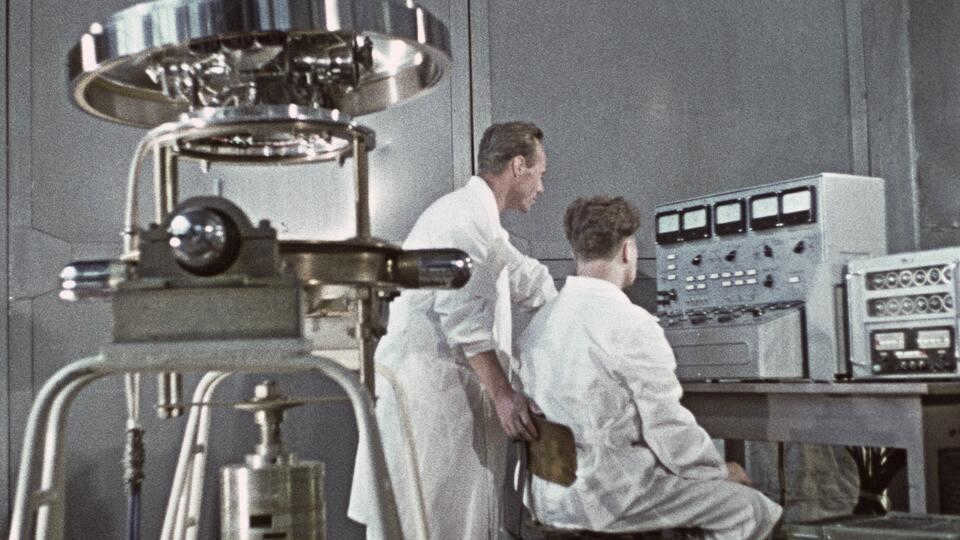
Sputnik-1 Evaluation
In early September 1957, the “Prostranstvo Sputnik-1” successfully completed its final evaluations on the vibration test bench and in the thermal chamber. On September 22, the R-7 rocket arrived at Tyura-Tam. Modifications were made to the rocket, including the replacement of the heavy head section with a satellite transition, the removal of the radio control system equipment and one of the telemetry systems, and simplification of the engine shutdown automation. These alterations resulted in a significant reduction in the rocket’s weight, totaling seven tons.
On the 26th of September, the CPSU Central Committee’s Presidium made the decision to initiate the launch of the satellite in the middle of October. On the 2nd of October, Sergei Korolev issued an order for the flight tests of the PS-1 and sent a notification of preparedness to Moscow. However, no instructions or response were received, leading the scientist to take the independent initiative of positioning the rocket with the satellite for launch.
Launch and Flight of Sputnik-1
At 22:28 Moscow time on October 4, 1957, the rocket carrying the satellite was launched. Just 295 seconds later, the rocket’s central unit and the satellite were placed into an elliptical orbit around the Earth. Another 20 seconds passed before Sputnik-1 separated from the rocket and began transmitting its distinctive “beep-beep” signals. Those signals were received at the testing site until the satellite disappeared over the horizon.
There was a risk that Sputnik 1 might not achieve the necessary velocity to enter orbit due to a delay in one of the engines. Additionally, the control system for emptying the fuel tank failed after 16 seconds, resulting in increased consumption of kerosene and premature shutdown of the central unit engine. However, the satellite still managed to successfully reach and maintain an elliptical orbit for a period of 92 days.
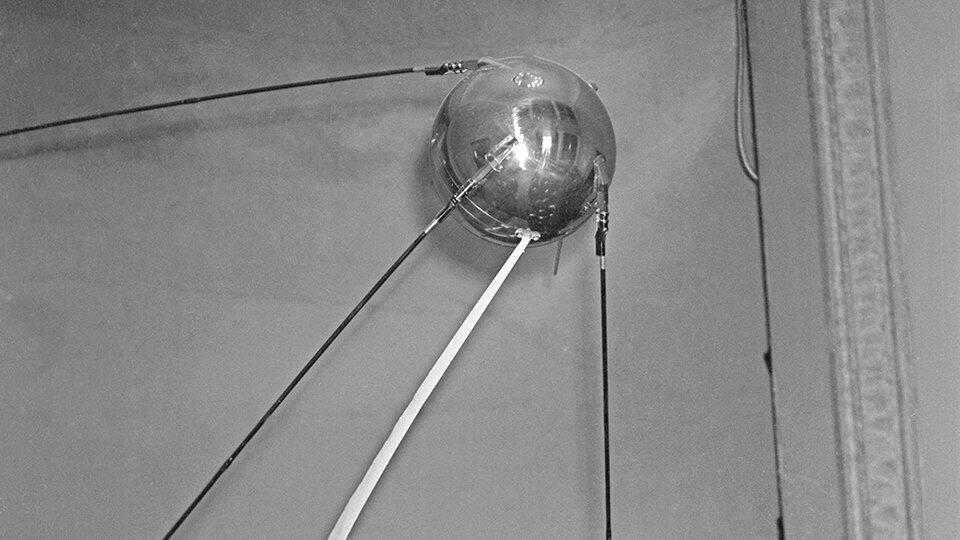
“The first satellite of our ancient planet was diminutive, yet its resounding call signs reverberated across every continent and among all peoples, symbolizing humanity’s audacious aspirations,” remarked Sergei Korolev.– commented Sergei Korolev.
Following a decrease in velocity due to atmospheric friction, Sputnik-1 commenced its descent and disintegrated completely within the dense layers of the atmosphere.
- The initial artificial Earth satellite remained in orbit for a total of 21 days, specifically from October 4th to October 25th. During its time in space, it completed 1440 revolutions around the Earth.
- The launch of the first satellite set a new speed record for jet spacecraft, reaching over 28,565 km/h. Additionally, it achieved a record payload mass of 83.6 kg that was successfully placed into orbit by an ISV.
- In the past, scientists would spend 30-60 minutes manually calculating satellite coordinates with a time reference. However, with the advancement of technology, these calculations can now be completed by a computer in just 1-2 seconds.
- The commencement of the space race served as a catalyst for the creation of NASA by the United States.
- The successful launch of Sputnik 1 had a profound impact on the development of the Internet. Specifically, it prompted the U.S. Department of Defense to accelerate the progress of the ARPANET packet-switched telecommunications network.
- The flag of Kaluga, known as the birthplace of cosmonautics, features an image of Sputnik-1.
- Following the launch of the first ISIS, the Russian word “sputnik” (meaning satellite) became widely used in many languages around the world.
KONSTANTIN EDUARDOVICH TSIOLKOVSKY
“The initial monumental leap for humanity is to transcend the Earth’s atmosphere and become an orbiting satellite. Everything else becomes relatively easier, even venturing beyond our solar system.”
THE START OF A NEW ERA IN SPACE EXPLORATION
October 4, 1957 marked a historic moment as humanity entered the space age with the successful launch of the world’s first artificial satellite into Earth’s orbit.
This groundbreaking achievement involved the deployment of the R-7 carrier rocket from the 5th Research and Development Test Site of the USSR Ministry of Defense, now known as the Baikonur Cosmodrome, to put the first man-made celestial body into space.
The PS-1 spacecraft, also known as the simplest satellite-1, had a diameter of 58 centimeters and weighed 83.6 kilograms. It was equipped with four pin antennas, each measuring 2.4 and 2.9 meters in length, which were used to transmit signals from battery-powered transmitters. Approximately 295 seconds after liftoff, the PS-1 and the rocket’s 7.5-ton central unit were placed into an elliptical orbit. This orbit had an altitude of 947 km at its highest point (apogee) and 288 km at its lowest point (perigee). At around 315 seconds after liftoff, the satellite separated from the second stage of the launch vehicle, and its call signs were immediately heard worldwide.
The development of the PS-1 spacecraft involved the collaboration of numerous scientists, including M.V. Keldysh, M.K. Tikhonravov, N.S. Lidorenko, V.I. Lapko, B.S. Chekunov, and many others. These individuals, under the leadership of S.P. Korolev, the founder of practical cosmonautics, played a crucial role in the creation of the world’s first artificial Earth satellite.
The launch of a man-made satellite into orbit around the Earth was a momentous event in our understanding of outer space and the study of our planet within the solar system. The analysis of the signals received from the satellite provided scientists with an unprecedented opportunity to investigate the upper layers of the ionosphere, a task that was previously impossible. Furthermore, valuable information regarding the equipment’s operating conditions was obtained, all calculations were meticulously verified, and the satellite’s deceleration allowed for the determination of the density of the upper atmosphere.
The launch of the inaugural man-made Earth satellite garnered worldwide attention, capturing the curiosity and interest of people all over the globe. The international press extensively covered this groundbreaking event, ensuring that the news spread far and wide.
In September 1967, the International Federation of Astronautics designated October 4 as the Commencement Day of the Space Age for Humanity.
THE REALITY OF THE ARTIFICIAL MOON
"On October 4, 1957, the Soviet Union achieved a successful launch of the first satellite. Based on initial data, the launch vehicle provided the satellite with the necessary speed of approximately 8,000 meters per second to enter orbit. Currently, the satellite follows elliptical paths around the Earth, and its trajectory can be observed during sunrise and sunset using basic optical instruments like binoculars and telescopes."
Based on updated calculations, the satellite is expected to travel at altitudes reaching 900 kilometers above the Earth’s surface. It will complete one full revolution in 1 hour and 35 minutes, with an inclination angle of 65° to the equatorial plane. On October 5, 1957, the satellite will pass over the Moscow area twice – once at 1:46 AM and again at 6:42 AM Moscow time. Continuous updates on the movement of the first artificial satellite launched by the USSR on October 4 will be broadcasted regularly on radio stations.
The satellite has a spherical shape and measures 58 centimeters in diameter. It weighs 83.6 kilograms. It is equipped with two radio transmitters that continuously emit radio signals at frequencies of 20.005 and 40.002 megahertz, which correspond to wavelengths of approximately 15 and 7.5 meters, respectively. The transmitter powers have been designed to ensure clear reception of the radio signals by a wide range of radio enthusiasts. The signals are sent in the form of telegraphic messages, with a duration of about 0.3 seconds and a pause of the same duration. The signals of one frequency are sent during the pause of the signals of the other frequency.”
THE DANGEROUS CONCEPT OF SATELLITES
In June 1948, the Academy of Artillery Sciences was making preparations for a scientific session, and the institute where Tikhonravov was employed received a request for potential reports that could be presented by the research institute. Tikhonravov made the decision to present his calculations on the Earth’s man-made satellite. While there was no active opposition, the subject of his report seemed so peculiar, if not unconventional, that they deemed it necessary to seek advice from Anatoly Arkadyevich Blagonravov, the president of the Artillery Academy.
At the age of 54, completely gray-haired, a handsome and impeccably polite academician dressed in the uniform of a Lieutenant-General of Artillery, sat surrounded by his closest staff, carefully listening to the small delegation from NIIZ. He comprehended the accuracy of Mikhail Klavdievich’s calculations, realizing that this was not merely a work of fiction from Jules Verne or H.G. Wells. However, he also recognized another crucial aspect: presenting such a report during the scientific session of the Artillery Academy would not be an appropriate addition.
– “It’s a fascinating question,” remarked Anatoly Arkadyevich, his voice tired and devoid of color. “However, we will not be able to include your report. It is unlikely that we will be understood… We will be accused of acting inappropriately…”
The military officers sitting around the president nodded in agreement.
After the departure of the small delegation from the research institute, Blagonravov experienced a sense of unease. He had a lot of experience working with the military and had adopted a useful rule from them – to not second-guess decisions once they were made. However, he found himself repeatedly going back to Tikhonravov’s report, even thinking about it at home in the evening. He couldn’t shake the feeling that this seemingly insignificant report was actually quite significant.
Tikhonravov was a respected researcher and a skilled engineer, but he wasn’t one to fight for his ideas. The rejection from the president of the AAS had deeply upset him. Back at the Research Institute, his young colleagues, who had remained silent during the meeting with the president, now began to make a commotion. Surprisingly, they presented new compelling arguments in support of their report.
“Why didn’t you speak up?” Mikhail Klavdievich asked angrily.
– We need to go back and convince the general! – the young man decided.
And the following day they returned. It seemed that Blagonravov was pleased with their arrival. He smiled and listened to the new arguments with little enthusiasm. Then he said:
– Alright then. We’ll include the report in the session plan. Get ready – we’ll face the embarrassment together….
Then there was a presentation, and after the presentation, as Blagonravov anticipated, a man of high rank and serious demeanor asked Anatoly Arkadyevich, almost casually, while looking over the head of his interlocutor:
– It seems like the Institute has nothing better to do, that’s why you’ve decided to venture into the realm of fiction…
Ironic smiles filled the room. But it wasn’t just smiles. Sergei Korolev approached Tikhonravov without a smile, and in a stern and intimidating manner, he said:
Yaroslav Golovanov. A drop of our sky
SATELLITE AS A WARNING
Not many individuals in the United States are familiar with an individual by the name of Sergei Pavlovich Korolev. Nevertheless, it was due to his efforts that NASA was established; it was because of him that we were able to reach the Moon. It was because of this enigmatic Russian that our nation received federal higher education loans; it was because of him that we are able to enjoy watching National Football League games on DirecTV.
"The Head Designer" – those were the words that became the title of Korolev, whose true identity was classified by the Soviet Union – single-handedly initiated the global competition in rocketry and space exploration. It was largely thanks to this determined individual, who survived Stalin’s Gulag despite losing all his teeth and nearly his life in Siberian camps, that the Democratic Party won the 1960 White House election, while Lyndon B. Johnson, on the contrary, served alongside John F. Kennedy and ultimately became the thirty-sixth president of the United States.
All of these occurrences are merely the aftermath of the momentous launch of the diminutive Soviet Sputnik, which was brought into existence under the guidance of Korolev 50 years ago and sent into the depths of space on October 4, 1957. This event sparked widespread panic in the United States, and its repercussions can still be felt to this day. However, it was not the presence of this small aluminum sphere that instilled fear, but rather the colossal carrier that propelled it into space – the world’s inaugural intercontinental ballistic missile. Weighing in at 183 tons, this weapon afforded the former Soviet Union the capability to obliterate any city on the planet within minutes – a power that no other nation possessed at the time. For the first time in American history, its territories were vulnerable to assault from a foreign entity.
ANOTHER BLOW TO THE UNITED STATES
Just as America was about to react to the successful launch of Sputnik-1, another satellite was sent into orbit around Earth on November 3rd of the same year.

